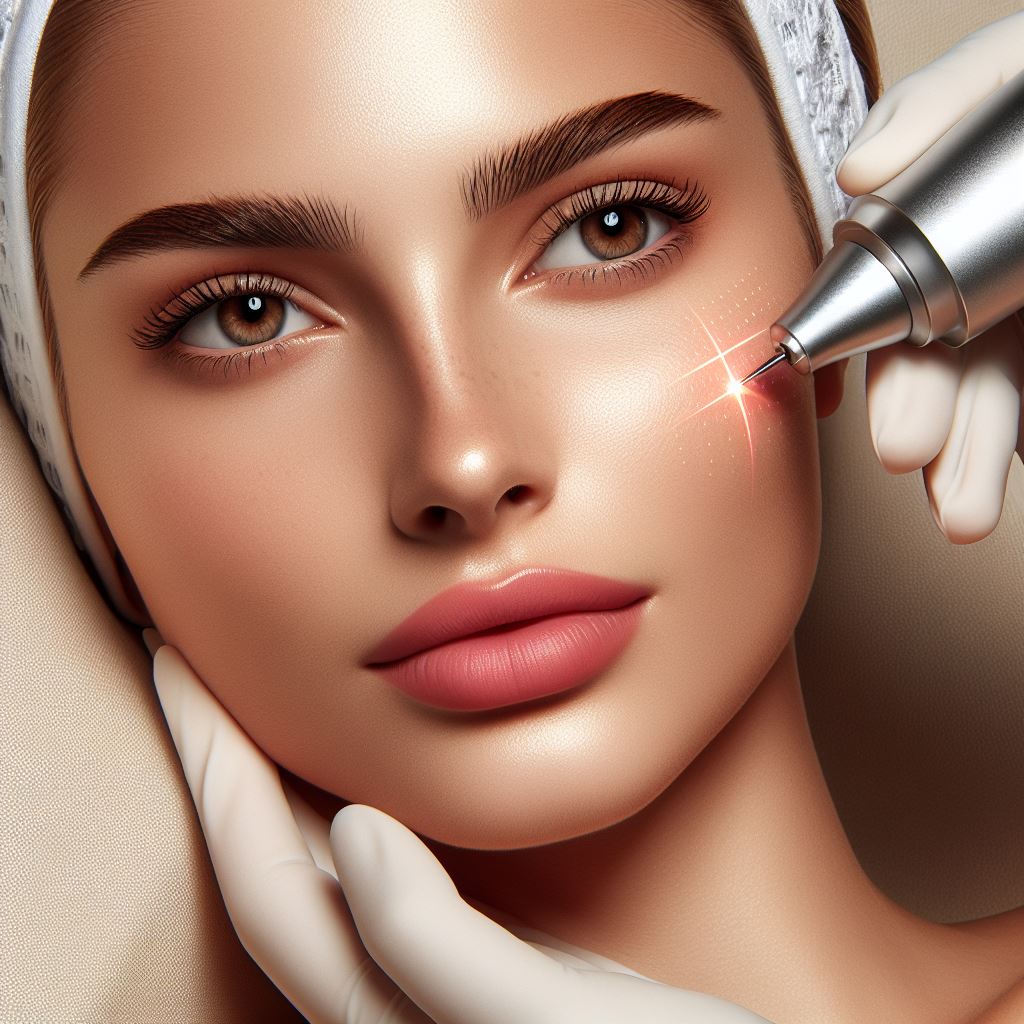Do you have skin concerns that make you feel self-conscious or unhappy? Do you wish you could get rid of your acne scars, sun spots, wrinkles, or unwanted tattoos? If so, you might want to consider Pico laser, a revolutionary skin treatment that can address a wide range of skin issues with minimal downtime and discomfort. In this blog post, we will explain what Pico laser is, how it works, and what it can do for your skin.

What is Pico laser?
Pico laser is a type of laser that uses ultra-short pulses of light to target and shatter pigmented particles in the skin, such as tattoo ink, melanin, or collagen. Unlike traditional lasers that use heat to destroy the particles, Pico laser uses a photoacoustic effect, which creates shockwaves that break the particles into tiny fragments. These fragments are then naturally eliminated by the body’s immune system.
Pico laser is one of the most advanced and versatile lasers available today. It can treat various skin conditions, such as:
- Tattoo removal: Pico laser can remove tattoos of different colors and sizes, with fewer sessions and less pain than other methods.
- Pigmentation removal: Pico laser can fade or erase sun spots, age spots, freckles, melasma, and other types of hyperpigmentation.
- Acne scar treatment: Pico laser can smooth and improve the appearance of acne scars, by stimulating the production of new collagen and elastin in the skin.
- Wrinkle reduction: Pico laser can reduce the depth and visibility of fine lines and wrinkles, by boosting the skin’s natural rejuvenation process.
- Skin tightening: Pico laser can firm and lift sagging skin, by enhancing the skin’s elasticity and texture.
How does Pico laser work?
Pico laser works by delivering ultra-short pulses of light to the skin, with a duration of one trillionth of a second. These pulses create a high-pressure impact on the skin, which causes the pigmented particles to shatter into tiny dust-like particles. The particles are then absorbed and removed by the body over time.
Pico laser has two wavelengths: 755 nm and 532 nm. The 755 nm wavelength is ideal for treating dark and deep pigments, such as black and blue tattoo ink, or melasma. The 532 nm wavelength is ideal for treating bright and shallow pigments, such as red and yellow tattoo ink, or sun spots.
Pico laser also has two modes: Focus and Zoom. The Focus mode uses a special lens array to create microscopic zones of high energy on the skin, which stimulate the skin’s natural healing response and collagen production. The Zoom mode uses a variable spot size to adjust the energy and coverage of the laser, depending on the size and depth of the treatment area.

How to prepare for Pico laser treatment?
Before undergoing Pico laser treatment, you should consult with a qualified and experienced dermatologist or aesthetician, who can assess your skin condition and recommend the best treatment plan for you. You should also follow these steps to prepare for your treatment:
- Avoid sun exposure, tanning beds, or self-tanners for at least two weeks before and after your treatment, as they can increase the risk of pigmentation changes or burns.
- Avoid using any products that contain retinoids, alpha-hydroxy acids, or beta-hydroxy acids for at least one week before and after your treatment, as they can irritate or sensitize your skin.
- Avoid taking any blood-thinning medications or supplements, such as aspirin, ibuprofen, or vitamin E, for at least one week before and after your treatment, as they can increase the risk of bruising or bleeding.
- Avoid waxing, plucking, or shaving the treatment area for at least one week before and after your treatment, as they can cause inflammation or infection.
- Cleanse and moisturize your skin on the day of your treatment, but do not apply any makeup, perfume, or lotion.
What to expect during and after Pico laser treatment?
During your Pico laser treatment, you will be asked to wear protective eyewear and lie down on a comfortable bed. Your provider will apply a cooling gel or device to your skin, to minimize any discomfort or heat sensation. Then, they will use a handheld device to deliver the laser pulses to your skin, following a predetermined pattern. You may feel a slight snapping or tingling sensation, similar to a rubber band snapping against your skin, but this is usually well-tolerated by most patients.
The duration of your treatment will depend on the size and condition of your treatment area, but it usually takes between 10 to 30 minutes. You may need multiple sessions, spaced four to eight weeks apart, to achieve your desired results.
After your Pico laser treatment, you may experience some mild redness, swelling, or tenderness on your skin, which should subside within a few hours or days. You may also notice some crusting, flaking, or peeling on your skin, which is normal and indicates that the pigmented particles are being shed. You should avoid picking or scratching your skin, as this can cause scarring or infection.
You should also follow these steps to care for your skin after your treatment:
- Apply a cold compress or ice pack to your skin, to reduce any inflammation or discomfort.
- Apply a gentle moisturizer or sunscreen to your skin, to keep it hydrated and protected from the sun.
- Avoid any strenuous activities, hot showers, saunas, or swimming pools, for at least 24 hours after your treatment, as they can increase the blood flow and heat to your skin.
- Avoid any exfoliating or abrasive products or treatments, for at least one week after your treatment, as they can irritate or damage your skin.
What are the benefits and risks of Pico laser treatment?
Pico laser treatment has many benefits, such as:
- It can treat a wide range of skin conditions and concerns, with minimal downtime and discomfort.
- It can deliver faster and more effective results than traditional lasers, with fewer sessions and less pain.
- It can treat all skin types and colors, including dark skin, with minimal risk of pigmentation changes or burns.
- It can stimulate the skin’s natural healing and rejuvenation process, resulting in smoother, firmer, and younger-looking skin.
Pico laser treatment also has some risks, such as:
- It can cause temporary side effects, such as redness, swelling, tenderness, crusting, flaking, or peeling on the skin, which may last for a few hours or days.
- It can cause rare complications, such as infection, scarring, blistering, or allergic reactions, which may require medical attention.
- It can be expensive, depending on the size and condition of the treatment area, and the number of sessions required.
- It may not be suitable for everyone, such as pregnant or breastfeeding women, people with active skin infections or diseases, or people with a history of keloid formation or poor wound healing.
Conclusion
Pico laser is a breakthrough skin treatment that can help you achieve clear, smooth, and youthful skin, without the hassle or harm of traditional lasers. It can treat various skin issues, such as tattoo removal, pigmentation removal, acne scar treatment, wrinkle reduction, and skin tightening, with minimal downtime and discomfort. It can also work for all skin types and colors, including dark skin, with minimal risk of pigmentation changes or burns.
If you are interested in Pico laser treatment, you should consult with a qualified and experienced dermatologist or aesthetician, who can assess your skin condition and recommend the best treatment plan for you. You should also follow the pre- and post-treatment instructions, to ensure a safe and successful outcome.
We hope you enjoyed this blog post and learned something new and useful. If you have any questions, comments, or feedback, please feel free to leave them below. We would love to hear from you and help you with your skin needs.
